Discover 7 hidden attractions, cool sights, and unusual things to do in Elstead (United Kingdom). Don't miss out on these must-see attractions: Crooksbury Hill, Puttenham and Crooksbury Commons, and Thundry Meadows. Also, be sure to include Charleshill SSSI in your itinerary.
Below, you can find the list of the most amazing places you should visit in Elstead (England).
Table of Contents
Crooksbury Hill
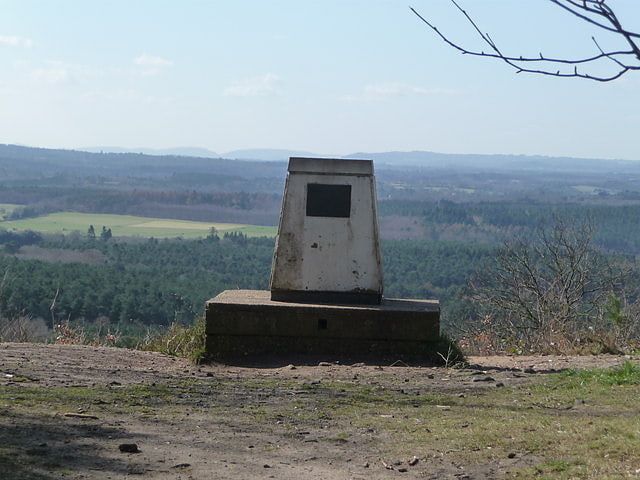
Nature reserve in England. Crooksbury Hill is a 17.2-hectare nature reserve within Puttenham and Crooksbury Commons east of Farnham in Surrey. It is owned by Surrey County Council and managed by the Surrey Wildlife Trust. Soldier's Ring on the north side of the hill is a Scheduled Monument. It is a hillfort dating to the late Bronze Age or early Iron Age.
There are extensive views from the top of the hill over south-west Surrey and east Hampshire. The site has sandy soil with heath and woodland. It was formerly part of Crooksbury Common, and the trees were planted after the area was enclosed in 1848.
There is access from Botany Hill.[1]
Puttenham and Crooksbury Commons
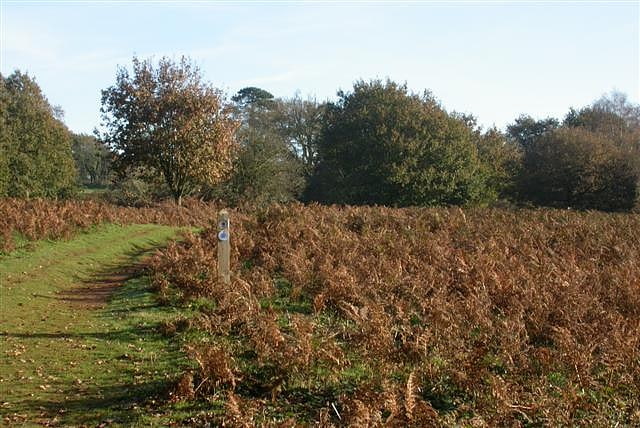
Puttenham and Crooksbury Commons is a 113.8-hectare biological Site of Special Scientific Interest between Farnham and Guildford in Surrey. Puttenham Common is owned by the Hampton Estate and managed on behalf of Surrey County Council by the Surrey Wildlife Trust. Hillbury Hillfort on Puttenham Common is a scheduled monument. It is a univallate hillfort which probably dates to the Iron Age.[2]
Thundry Meadows
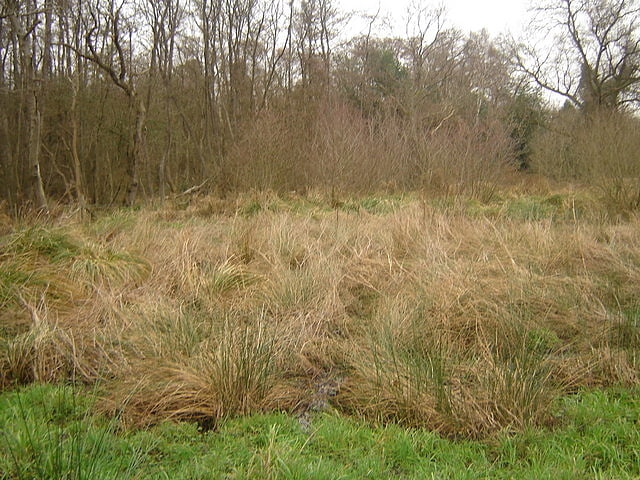
Nature reserve in England. Thundry Meadows is a 16-hectare nature reserve in Elstead in Surrey. It is managed by the Surrey Wildlife Trust. Part of it is Charleshill Site of Special Scientific Interest.
This site on the north bank of the River Wey grassland alder carr, wet and dry woodland, ditches and springs. The meadows are maintained by Belted Galloway cattle, providing suitable conditions for harvest mice. An unusual habitat is quaking mire, a mat of vegetation floating on liquid peat.
There is access from Farnham Road.[3]
Charleshill SSSI
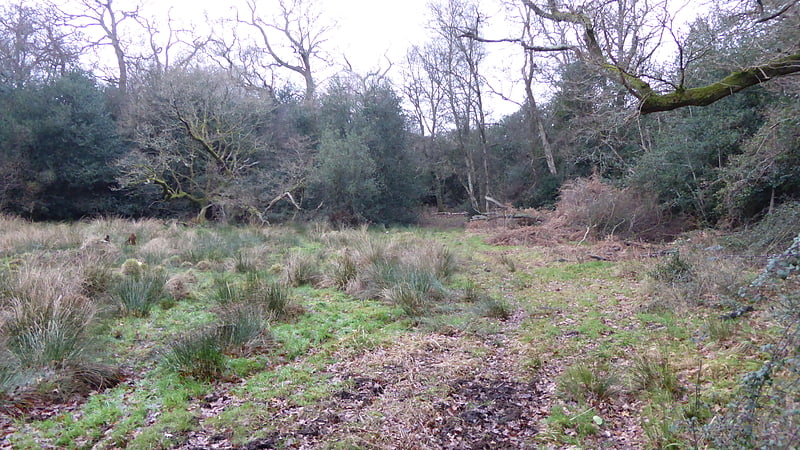
Charleshill SSSI is a 10.1-hectare biological Site of Special Scientific Interest west of Elstead in Surrey. It is part of Thundry Meadows nature reserve, which is owned and managed by the Surrey Wildlife Trust
This site has wet and dry meadows with a very wet area which has quaking mire. The mire is dominated by bottle sedge, marsh cinquefoil and bog-bean, together with white sedge in the wettest part. There is also some wet woodland.
There is access from Farnham Road.[4]
Thursley
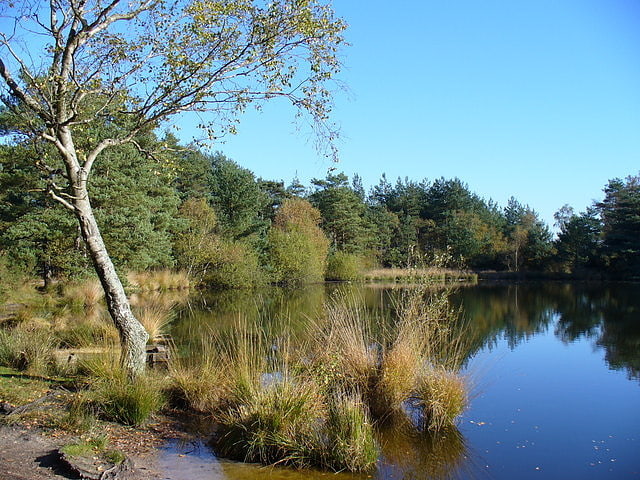
Thursley, Hankley and Frensham Commons is a 1,878.5-hectare biological Site of Special Scientific Interest west of Godalming in Surrey. Thursley and Hankley Commons are Nature Conservation Review sites, Grade I. An area of 115.1 hectares is a local nature reserve called The Flashes and an area of 180 hectares is the Elstead Group of Commons, a nature reserve managed by the Surrey Wildlife Trust. Thursley Common is a national nature reserve. An area of 265.7 hectares is the Thursley & Ockley Bogs Ramsar site. The site is a Special Protection Area and part of the Thursley, Ash, Pirbright & Chobham Special Area of Conservation.
This site is of national importance for its invertebrates, birds and reptiles. It is mainly heathland but the valley mire on Thursley Common is one of the best in the country. Orthoptera include the nationally rare large marsh grasshopper. The site is one of the richest in southern England for birds and of outstanding importance for reptiles, such as the nationally rare sand lizard.[5]
Seale and Sands

English civil parish. Seale and Sands is a civil parish in the Guildford District Council area of Surrey, England with a population of 887. The principal settlement is Seale; other places include Sandy Cross and The Sands.
The Sands, including Sandy Cross forms the rest of the local government rural unit that provides certain minor services. Major services are provided by Guildford Borough Council and Surrey County Council. Across the old nucleus and mostly below the North Downs passes a short stretch of the long-distance footpath, the Pilgrims' Way (North Downs Way). Littleworth Cross is the southern sparsely inhabited junction settlement on minor woodland lanes, which has a heritage-listed park and garden which played host to an important event in the evolution of the work of international early 20th century homes and gardens designer Gertrude Jekyll. The west of the parish contains Farnham Golf Club.
The parish is almost square, 2 miles east to west and north to south. It covers 887 hectares (2,190 acres) most of this is open countryside. The parish of Seale (combined villages of Seale and Sands) has a population of 900,
Apart from houses by the old school, most of the houses in the parish are to the south, along Binton Lane and in The Sands.[6]
Hankley Farm
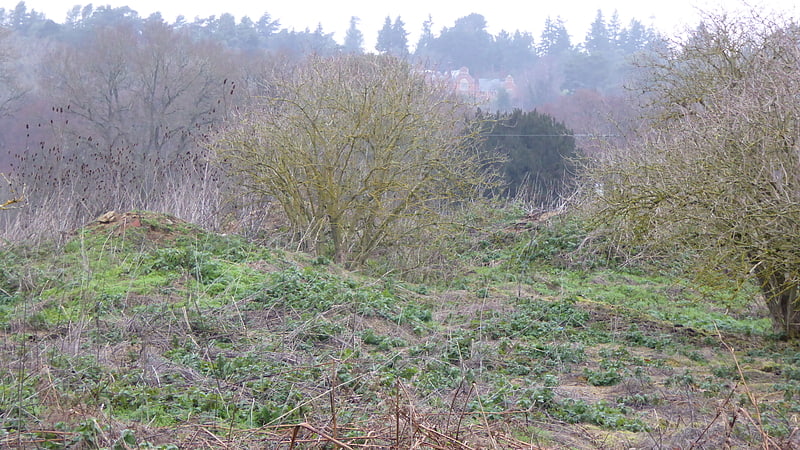
Farm in England. Hankley Farm is a 2.4-hectare biological Site of Special Scientific Interest west of Elstead in Surrey.
This sandy arable field has been designated an SSSI because of its large population of a nationally endangered plant, red-tipped cudweed. This was formerly a common weed on arable fields, but it has been in sharp decline since the 1960s. The colonies in the site and neighbouring fields may represent as much as 50% of the British population.
The site is private land with no public access.[7]